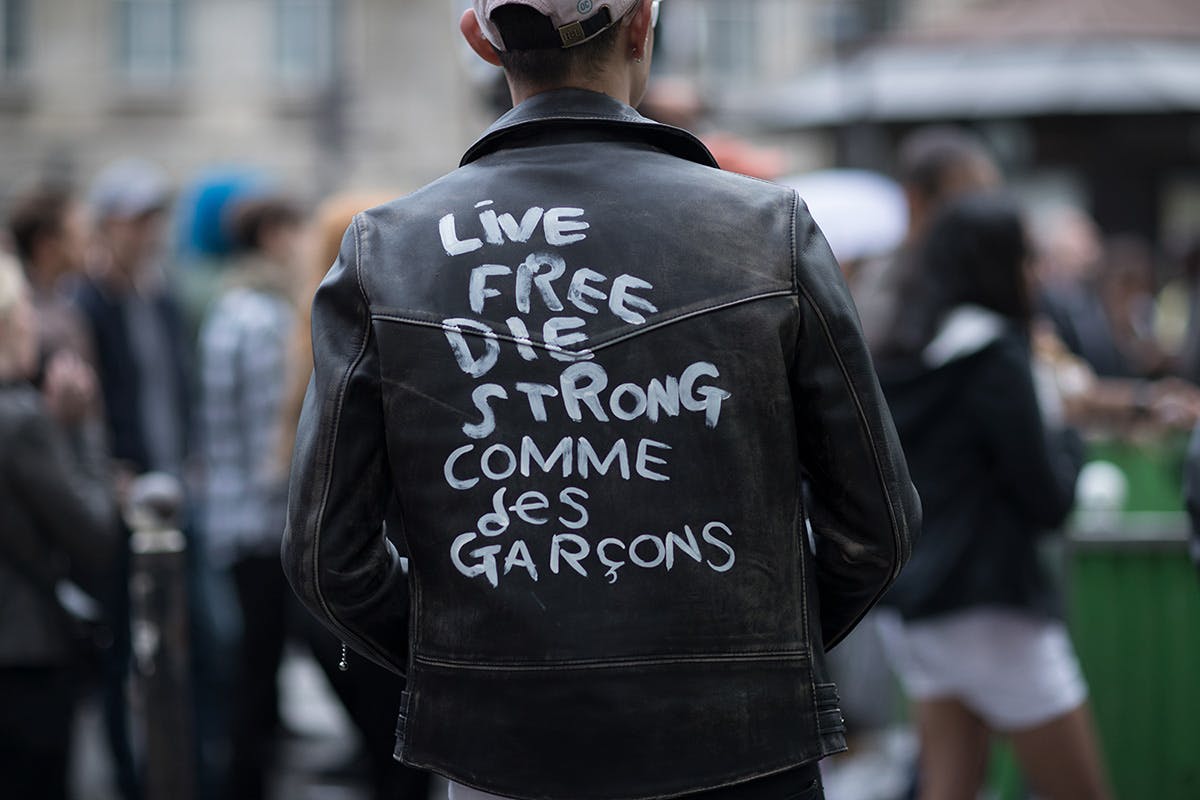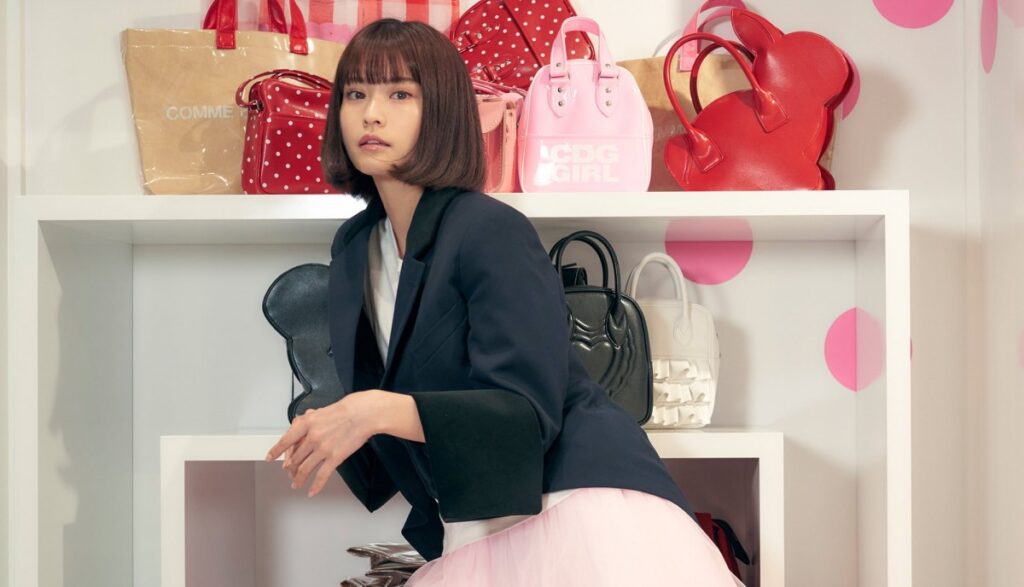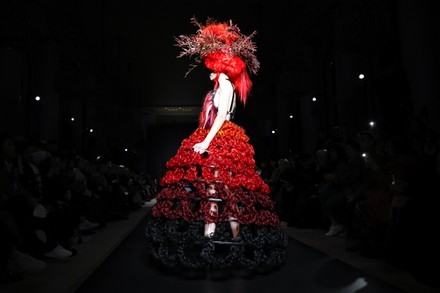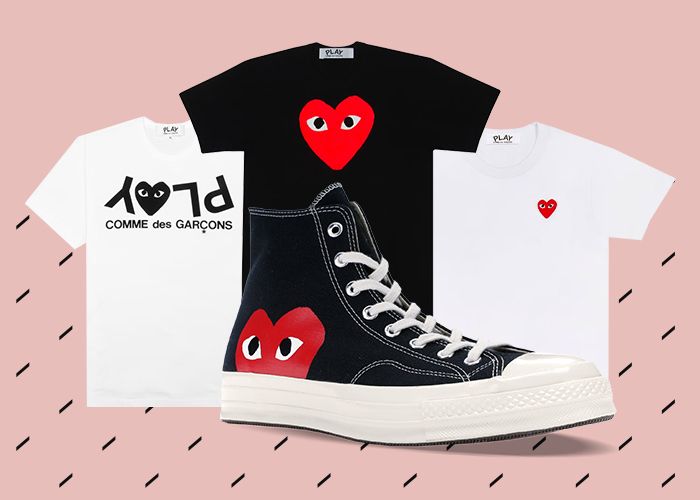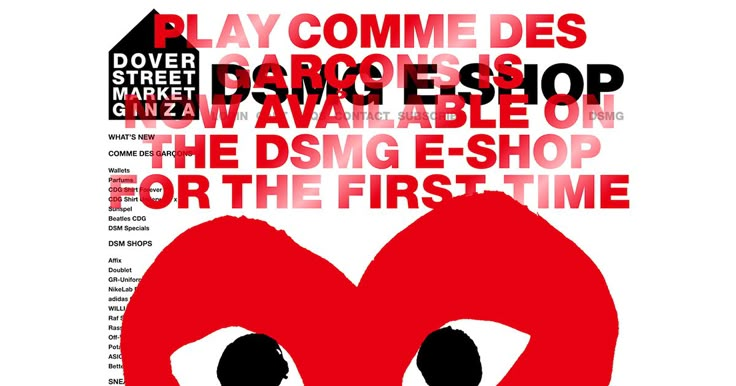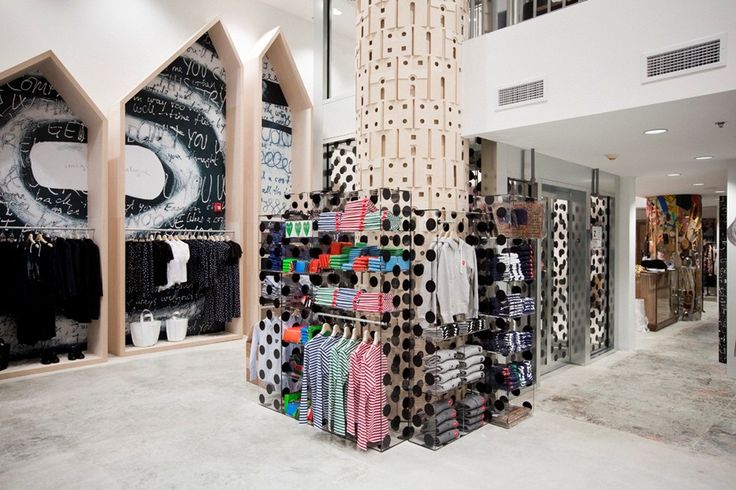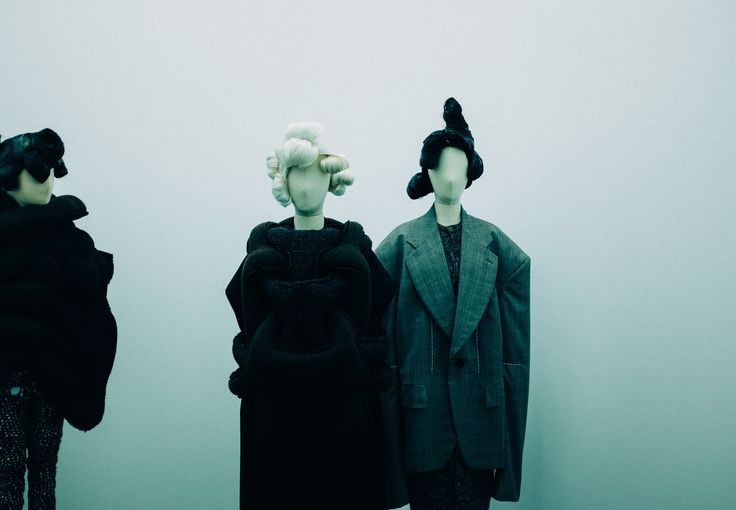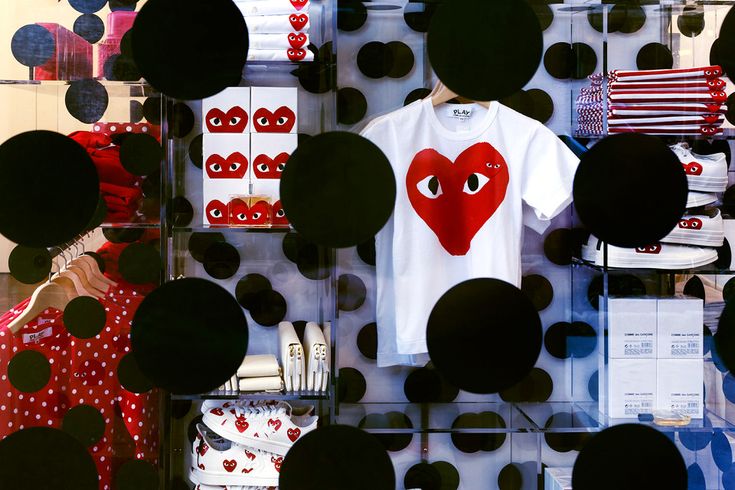╔══════════════════════════════════════════════════════════════════════╗
║ “Fashion is not about utility. It’s about emotion.” — Rei Kawakubo ║
╚══════════════════════════════════════════════════════════════════════╝
🌸 1. A Revolution Begins in Tokyo
In 1969, in a quiet Tokyo studio filled with scraps of black fabric and ideas too wild for the time, Rei Kawakubo began what would become one of fashion’s most radical journeys — Comme des Garçons, meaning “like boys.”
It wasn’t about masculinity; it was about freedom. Kawakubo refused to design clothes that fit into society’s boxes.
Her early pieces were raw, asymmetric, torn — a poetic rebellion against beauty’s rules.
She once said:
“For something to be beautiful, it doesn’t have to be pretty.”
That became her lifelong manifesto.
🖤 2. The 1970s — Building a New Language
| Year | Milestone | Concept |
|---|---|---|
| 1973 | Comme des Garçons officially registered | Minimal, anti-fashion black garments |
| 1975 | Launch of Homme line | Gender-fluid tailoring |
| 1978 | First Tokyo boutique opens | Cult following forms |
The 1970s Japanese fashion scene was polished, elegant, and obsessed with Western luxury. Kawakubo went the opposite way — holes, frays, uneven hems — crafting what she called “the beauty of unfinished things.”
Her designs spoke quietly but powerfully to a generation that wanted identity, not perfection.
🌍 3. 1981 — The Paris Invasion
Paris Fashion Week, 1981.
Lights dimmed, the first model stepped out — hair wild, clothes black and torn, body shape distorted.
The audience gasped. Some booed. Others wept.
Critics named it “Hiroshima chic.” But Rei Kawakubo didn’t care.
She wasn’t chasing applause; she was chasing truth.
That debut rewired the global definition of style and placed Japanese avant-garde at the heart of world fashion.
╭───────────────────────────────╮
│ “Creation is discovering what │
│ has never existed before.” │
│ — Rei Kawakubo │
╰───────────────────────────────╯
🧩 4. The 1980s — Fashion as Emotion
During the 1980s, Comme des Garçons became a philosophical force.
✴️ 1982 — “Destroy”
Garments looked as though they’d survived a storm. Holes, frays, visible stitches — destruction as creation.
✴️ 1983 — “Lumps and Bumps”
Padded shapes that distorted the human form. Critics were baffled; artists were enthralled. This was body as sculpture.
✴️ 1986 — Homme Plus
Menswear reimagined — suits turned inside-out, seams revealed, rules broken. It said: masculinity can be gentle, fluid, expressive.
By 1989, Comme des Garçons had boutiques in Tokyo, Paris, and New York — its aesthetic now a language of its own.
💥 5. The 1990s — Expanding the Universe
The 1990s turned Comme des Garçons into an institution of creative independence.
| Sub-Label | Founded | Focus |
|---|---|---|
| Comme des Garçons Parfum | 1992 | Gender-neutral fragrances |
| Junya Watanabe Comme des Garçons | 1994 | Tech innovation meets tailoring |
| Tricot Comme des Garçons | 1999 | Knitwear experimentation |
🌫️ Perfume as Philosophy
When Kawakubo released her first scent, she didn’t want it to “smell pretty.”
Instead, Comme des Garçons Parfum smelled like tar, ink, smoke, and spice — the scent of creation itself.
“You can’t make something new without breaking something old.” — Rei Kawakubo
These years solidified her empire — not through marketing, but through meaning.
⚡ 6. The 2000s — Collaboration Without Compromise
The new millennium brought Comme des Garçons into the mainstream — on her terms.
💖 2002 — PLAY
A red heart with eyes appeared. Simple. Playful. Instantly iconic.
Designed by Polish artist Filip Pagowski, the logo became a bridge between high fashion and youth culture.
🏬 2004 — Dover Street Market (London)
A “beautiful chaos” retail concept dreamed up by Kawakubo and her husband Adrian Joffe.
Each brand inside had its own installation — turning shopping into an art exhibit.
🤝 Collaborations that Changed Fashion
- Nike x Comme des Garçons — sportswear reimagined as art
- Converse x CDG PLAY — a sneaker that conquered both runways and streets
- H&M x Comme des Garçons (2008) — avant-garde for everyone
- Louis Vuitton x CDG — luxury meets rebellion
Through these partnerships, Kawakubo proved that commercial success and creative purity can coexist — if vision comes first.
🪞 7. The 2010s — Art, Emotion, and Legacy
The 2010s were Kawakubo’s art era — runway shows became emotional installations.
| Year | Collection | Theme |
|---|---|---|
| 2012 | “White Drama” | Life, marriage, death — all in white |
| 2014 | “Not Making Clothes” | Pure art objects, not garments |
| 2017 | Met Gala Exhibit | Art of the In-Between — Rei honored at The Met |
| 2018 | “Multidimensional Graffiti” | Explosions of color and chaos |
In 2017, the Metropolitan Museum of Art in New York presented “Rei Kawakubo/Comme des Garçons: Art of the In-Between.”
It was the first major exhibit for a living designer since Yves Saint Laurent.
Her designs were displayed like sculptures — emotion frozen in fabric.
“I want to make clothes that people haven’t seen before.” — Rei Kawakubo
🌐 8. The 2020s — Still Breaking Boundaries
Even after 50 years, Comme des Garçons refuses to settle.
🧠 2020 — “Neo Future”
Presented during the pandemic, this digital collection explored isolation and connection — a metaphor for humanity under pressure.
🕶️ 2021 — Homme Plus “Metal Outlaw”
Tailoring with punk energy — spikes, metallic fabrics, and rebellion made wearable.
🌹 2023 — “Black Rose”
A poetic return to darkness — fragile yet fierce, layers of texture symbolizing resilience.
🌀 2024 — “In-Between Worlds”
Revisiting her lifelong theme: balance between chaos and order.
Comme des Garçons remains a cultural compass, predicting what the world feels before it can put it into words.
🧠 9. Rei Kawakubo’s Philosophy
Rei Kawakubo doesn’t just design; she questions.
Her fashion is philosophy woven in fabric.
╔════════════════════════════════════════════╗
║ DECONSTRUCTION → Breaking old structures ║
║ ANDROGYNY → Clothing beyond gender ║
║ IMPERFECTION → Emotion over polish ║
║ FREEDOM → Creation without permission ║
╚════════════════════════════════════════════╝
She rarely explains her collections, saying she prefers the audience to feel rather than understand.
Her silence is intentional — it allows the work to speak.
“The only way to make something new is to stop thinking about what people will think.” — Rei Kawakubo
Kawakubo’s influence reaches far beyond her label — inspiring Yohji Yamamoto, Issey Miyake, Martin Margiela, Rick Owens, and even Virgil Abloh.
Each carries a piece of her courage — the courage to create without fear.
🏛️ 10. Comme des Garçons: A Bridge Between Japan and France
The story of Comme des Garçons is not just about a brand — it’s a dialogue between East and West.
From the quiet discipline of Japanese craftsmanship to the theatricality of Parisian haute couture, Kawakubo built a bridge — not by blending, but by colliding worlds.
| Influence | Japanese Minimalism | French Expression |
|---|---|---|
| Technique | Precision, layering | Artistry, emotion |
| Philosophy | Impermanence (Wabi-sabi) | Drama and narrative |
| Result | Comme des Garçons — the harmony of contradiction |
Her work brought Japanese designers to Paris, opening doors for future generations — from Issey Miyake to Nigo and Sacai.
She changed how the world perceives not just Japan, but creativity itself.
🕊️ 11. Rei Kawakubo: The Woman Behind the Legend
Unlike other designers, Rei Kawakubo avoids the spotlight. No Instagram, few interviews, minimal publicity.
Yet, her influence is everywhere — in galleries, concept stores, and street culture.
She’s an artist disguised as a fashion designer, turning garments into ideas, and ideas into movements.
Her husband, Adrian Joffe, manages Comme des Garçons’ global operations and Dover Street Market, ensuring that business and creativity coexist — always on Rei’s terms.
“I never wanted to fit in. I wanted to stand for something.” — Rei Kawakubo
🌺 12. Legacy — The Beauty of the Unfinished
Half a century after its birth, Comme des Garçons continues to defy time.
Its influence is visible in everything from streetwear to haute couture, from fragrance to furniture.
Rei Kawakubo never chased trends — she created them.
Her work is a living contradiction: harsh yet gentle, simple yet complex, dark yet luminous.
In a world obsessed with perfection, she taught us that imperfection is the highest form of beauty.
╭──────────────────────────────────────────────╮
│ COMME DES GARÇONS — A STORY STILL BEING │
│ WRITTEN BETWEEN THE STREETS OF TOKYO AND │
│ THE AVENUES OF PARIS. │
╰──────────────────────────────────────────────╯

